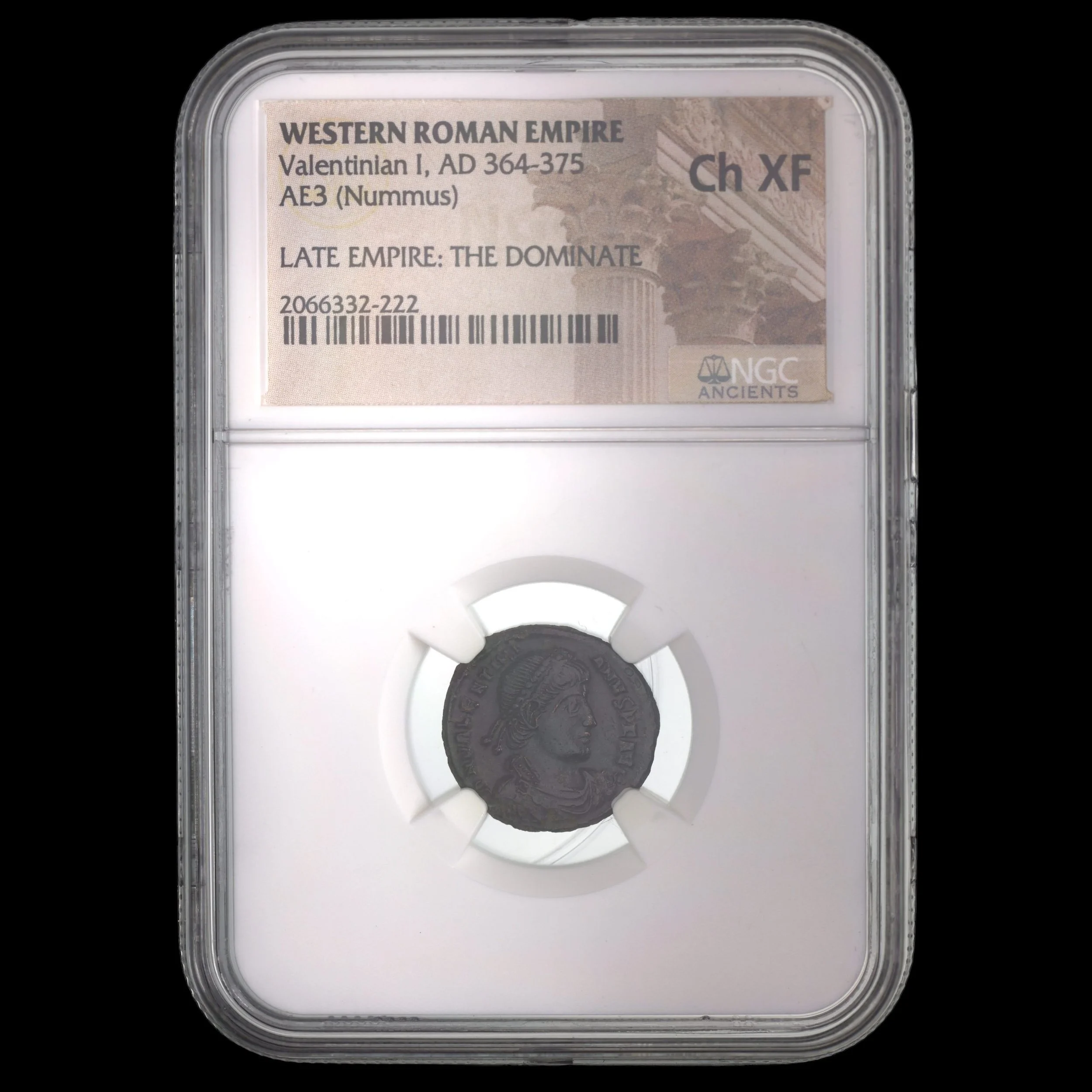 Image 1 of 5
Image 1 of 5

 Image 2 of 5
Image 2 of 5

 Image 3 of 5
Image 3 of 5

 Image 4 of 5
Image 4 of 5

 Image 5 of 5
Image 5 of 5






Arcadius Roman AE3 (about 1,615-1,640 years ago)
The coins shown are representative examples of the grade and type, but not the actual specimens for sale. For details on NGC’s grading standards and definitions, please refer to our NGC Grading page.
This medium-sized bronze coin was issued during the reign of Emperor Arcadius, who ruled the Eastern Roman Empire after its permanent division following his father's death. These larger bronze denominations would have been used for more substantial everyday transactions throughout the eastern provinces during this historically significant period.
Coin Description:
Front side: Profile portrait of Emperor Arcadius wearing an imperial diadem and draped imperial robes, with his name and titles in Latin around the edge
Back side: Likely displays imperial imagery such as the emperor in military dress, victory personifications, or Christian religious symbolism becoming increasingly common in this period
Technical Details:
Bronze composition (copper alloy)
AE3 denomination (medium-sized standard bronze coin)
NGC certified (Numismatic Guaranty Corporation)
Minted between 383-408 CE in various eastern imperial mints
Condition: Certified by NGC, specific grade not provided
Historical Significance: This coin represents the crucial transition period when the Mediterranean world permanently split into eastern and western political entities. While the Western Roman Empire crumbled under barbarian pressure over the next century, the Eastern Empire under Arcadius and his successors survived and evolved into the Byzantine state. Constantinople flourished as the eastern capital, and despite challenges including Gothic invasions and religious controversies, Arcadius maintained relative stability, establishing foundations for the Byzantine Empire's millennium-long survival.
The coins shown are representative examples of the grade and type, but not the actual specimens for sale. For details on NGC’s grading standards and definitions, please refer to our NGC Grading page.
This medium-sized bronze coin was issued during the reign of Emperor Arcadius, who ruled the Eastern Roman Empire after its permanent division following his father's death. These larger bronze denominations would have been used for more substantial everyday transactions throughout the eastern provinces during this historically significant period.
Coin Description:
Front side: Profile portrait of Emperor Arcadius wearing an imperial diadem and draped imperial robes, with his name and titles in Latin around the edge
Back side: Likely displays imperial imagery such as the emperor in military dress, victory personifications, or Christian religious symbolism becoming increasingly common in this period
Technical Details:
Bronze composition (copper alloy)
AE3 denomination (medium-sized standard bronze coin)
NGC certified (Numismatic Guaranty Corporation)
Minted between 383-408 CE in various eastern imperial mints
Condition: Certified by NGC, specific grade not provided
Historical Significance: This coin represents the crucial transition period when the Mediterranean world permanently split into eastern and western political entities. While the Western Roman Empire crumbled under barbarian pressure over the next century, the Eastern Empire under Arcadius and his successors survived and evolved into the Byzantine state. Constantinople flourished as the eastern capital, and despite challenges including Gothic invasions and religious controversies, Arcadius maintained relative stability, establishing foundations for the Byzantine Empire's millennium-long survival.




























